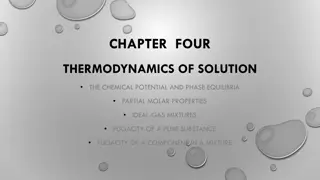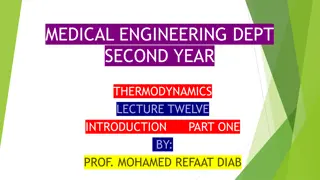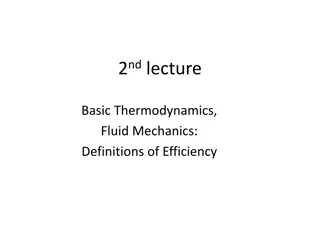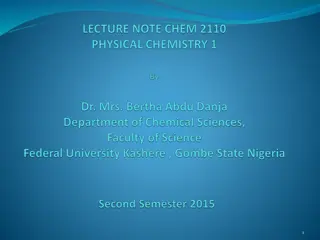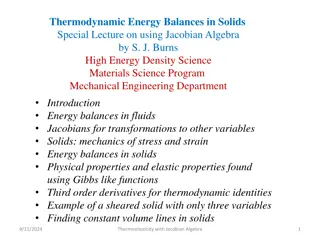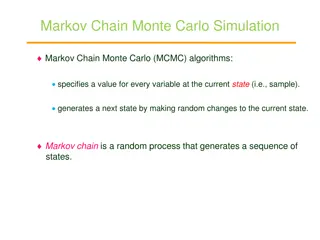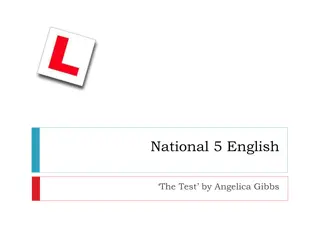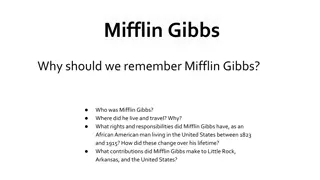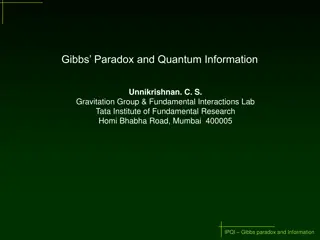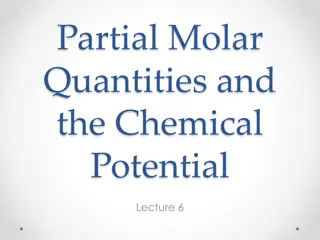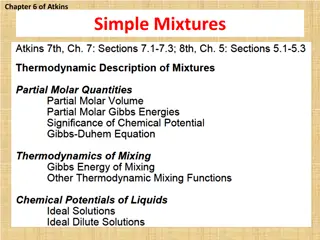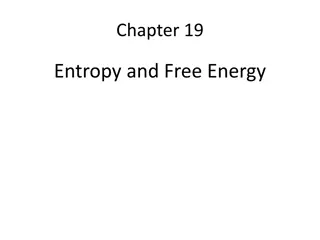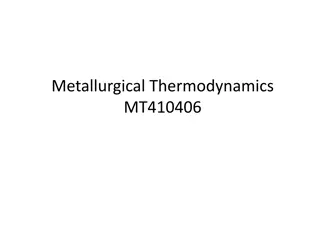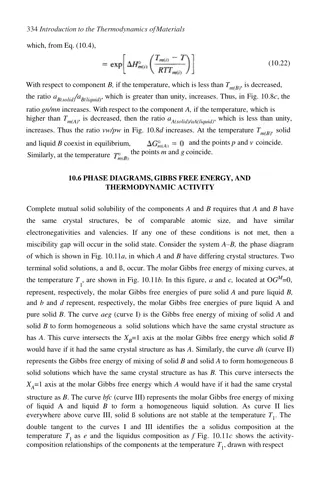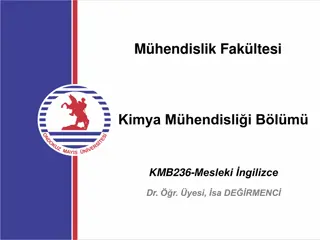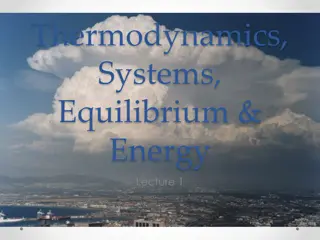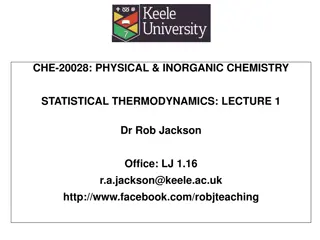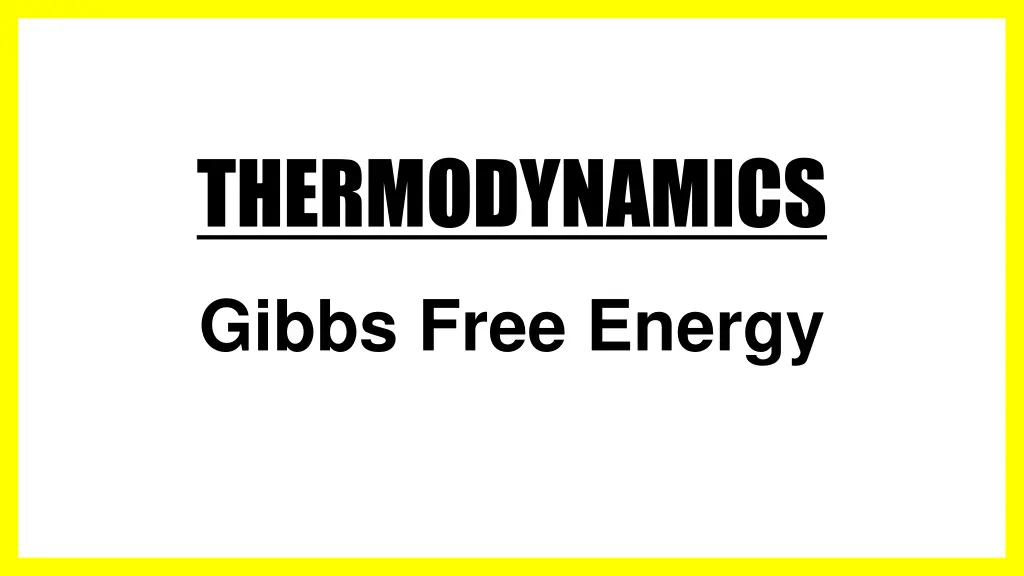
Understanding Gibbs Free Energy in Thermodynamics
Explore the concept of Gibbs Free Energy in thermodynamics, which represents the maximum work a system can release to its surroundings at constant temperature and pressure. Learn about the equations involving enthalpy, entropy, and the spontaneity of reactions based on Gibbs Free Energy calculations. Discover how to predict the spontaneity of a reaction using mental math techniques.
Download Presentation

Please find below an Image/Link to download the presentation.
The content on the website is provided AS IS for your information and personal use only. It may not be sold, licensed, or shared on other websites without obtaining consent from the author. If you encounter any issues during the download, it is possible that the publisher has removed the file from their server.
You are allowed to download the files provided on this website for personal or commercial use, subject to the condition that they are used lawfully. All files are the property of their respective owners.
The content on the website is provided AS IS for your information and personal use only. It may not be sold, licensed, or shared on other websites without obtaining consent from the author.
E N D
Presentation Transcript
THERMODYNAMICS Gibbs Free Energy
Gibbs Free Energy Gibbs free energy, G - the maximum amount of work energy that can be released to the surroundings by a system for a constant temp and pressure system. Gibbs free energy is often called the chemical potential because it is similar to the storing of energy in a mechanical system.
Gibbs Free Energy It can be shown that: T Suniv = Hsys T Ssys This turns into
Gibbs Free Energy It can be shown that: T Suniv = Hsys T Ssys This turns into
Gibbs Free Energy Gsys = Hsys T Ssys Important Equation!!!
Gibbs Free Energy T Suniv = Hsys T Ssys Gsys = Hsys T Ssys Because Suniv determines if a process is spontaneous, G also determines spontaneity. Suniv is positive when spontaneous, so G is negative.
Gibbs Free Energy A process will be spontaneous when G is negative Important fact that lets us do a lot of math!
Mental Math with Gibbs Free Energy It is very common for them to ask you to predict if a reaction is spontaneous based on just the algebraic sign on H and S You need to use the Gibbs equation to see if G ends up + or - Gsys = Hsys T Ssys
Mental Math with Gibbs Free Energy Hsys T Ssys = Gsys S + more disorder H G At Any temperature exothermic ALWAYS spont. (Negative #) anyT(Positive #) = Always Negative # Remember T is in Kelvin, always a positive number
Mental Math with Gibbs Free Energy Hsys T Ssys = Gsys S less disorder H + G + At Any temp NEVER spont. endothermic (Positive #) anyT(Negative #) = Always Positive # Notice the double negative! (Positive #) + (Positive #)
Mental Math with Gibbs Free Energy Hsys T Ssys = Gsys S + more disorder (Positive #) largeT(Positive #) = Negative # H needs to be a smaller positive number than T Ssys Small # - Big # = Negative # H < T Ssys H + G spont. At High Temp endothermic
Mental Math with Gibbs Free Energy Hsys T Ssys = Gsys S less disorder (Negative #) smallT(Negative #) = Negative # Notice the double negative! (Negative #) + (Positive #) H needs to be a larger negative than T Ssys H < T Ssys H G spont. At Low Temp exothermic
Mental Math with Gibbs Free Energy This always makes my brain feel scrambled figure out what works for you. Flat out memorize it (best, fastest) Write out the equation and +/- and walk through the mental math each time (what I do because I m lazy, and I m not taking timed tests like you are ha!) Find/make a mnemonic? (Tell me if you find a good one!) YOU CANT LET YOUR BRAIN SHUT DOWN Don t let it feel confused and shut off just walk through it slowly
HsysT Ssys = Gsys S + more disorder less disorder less disorder less disorder + more disorder + more disorder H exothermic + endothermic exothermic exothermic + endothermic + endothermic G At Any temp ALWAYS spont. + NEVER spont. spont. + NOT spont. spont. + NOT spont. Any temp Low Temp High Temp High Temp Low Temp
So many versions online, find one you like! If you find a good one, always share with me!
Gibbs at Equilibrium When G = 0 the reaction is at equilibrium.
Calculating Free Energy Method #1- Gibbs-Helmohotz Equation G = H - T S For reactions at a constant temperature
Calculating Free Energy Method #2- A variation of Hess s Law Cdiamond(s) + O2(g) Cgraphite(s) + O2(g) CO2(g) CO2(g) G0 = -397 kJ G0 = -394 kJ Cdiamond(s) + O2(g) CO2(g) G0 = -397 kJ CO2(g) Cgraphite(s) + O2(g) G0 = +394 kJ -3 kJ Cdiamond(s) Cgraphite(s) G0 =
Calculating Free Energy Method #3- Standard Free Energy of Formations = n G 0 0 f 0 f G n G (products) (reactants) p r Gf0 of an element in its standard state is zero
Free Energy and Pressure Enthalpy, H, is not pressure dependent Entropy, S yes pressure dependent Depends on volume, so also depends on pressure So Gibbs will change because S changes Slarge volume > Ssmall volume Slow pressure > Shigh pressure
Free Energy and Equilibrium G = G + RTLn(Q), Where G is at some non standard condition, and G0 is standard 1 atm, Q is some condition not at equilibrium Remember K = equilibrium, Q = not at equilibrium K = Q at equilibrium
Free Energy and Equilibrium Equilibrium point occurs at the lowest value of free energy available to the reaction system At equilibrium: G= 0 and Q = K G0 G0 = 0 G0 < 0 G0 > 0 K K = 1 K > 1 K < 1
Free Energy and Equilibrium G = G + RTLn(Q) So if at equilibrium G = 0 and K = Q 0 = G + RTLn(K) Then rearrange G = -RTLn(K) where R=8.314J/mol K
Reminder. If you use the Hess s Law style method for Gibbs problems, where you have to add together various rxns, you need to edit your Keq value when you add/multiply your equations! Multiplying an Equation Raise K to that exponent Double the Rxn = K2 Half the Rxn = K Adding Reactions at the End Multiply K values Koverall = K1 x K2 x K3, etc Then you can do things like - G = -RTLn(K)
Free Energy and Equilibrium So if G = -RTLn(K) And if G = H - T S Then = = 0 0 0 ln( ) G RT K H T S
Free Energy and Equilibrium = = 0 0 0 ln( ) G RT K H T S Rearrange to solve for ln(K) . 0 0 0 0 1 H S H S = + = + ln( ) K RT R R T R So . ln(K) 1/T And that equation looks like y = mx + b .
Free Energy and Equilibrium You can find H and S by graphing! ln K = ? 1 ? + ? ? ? y = m x + b 1 ? 1st - Graph ln(K) vs 2nd - Find line of best fit (Excel or graphing calculator) 3rd - Slope = ? Intercept = ? ? ?
Soooo many rearrangements There are so many ways to rearrange, substitute, and solve for various things when it comes to Thermodynamics. You HAVE to have decent algebra skills! My best advice if algebra is not your strong suit Practice over and over until it becomes muscle memory how to rearrange. Every time you have a question that requires a different equation rearrangement/substitution, write it down! Start making your own equation cheat sheet.
2NO2(g) Srxn= -146.5 J/molK For the Rx: 2NO(g) + O2(g) Calculate the standard molar entropy of O2(g). S NO(g) = 210.8 J/mol K , S NO2(g) = 240.1 J/mol K -175.8 J mol-1K-1 269.4 J mol-1K-1 -205.1 J mol-1 K-1 205.1 J mol-1 K-1 None of the above
2NO2(g) Srxn= -146.5 J/molK For the Rx: 2NO(g) + O2(g) Calculate the standard molar entropy of O2(g). S NO(g) = 210.8 J/mol K , S NO2(g) = 240.1 J/mol K ????= ????????? ?????????? -175.8 J mol-1K-1 (-146.5) = [ 2(240.1) ] [ 2(210.8) + S O2 ] 269.4 J mol-1K-1 S O2 = 205.1 Jmol-1K-1 -205.1 J mol-1 K-1 205.1 J mol-1 K-1 None of the above
For the following Rx: N2(g) + H2(g) Calculate the standard Free Energy, G for the rxn at 25 C. H = -264kJ/mol S = -278 J/mol K NH3(g) -82.5 KJ mol-1 -181 KJ mol-1 -6686 KJ mol-1 181 KJ mol-1 None of the above
For the following Rx: N2(g) + H2(g) Calculate the standard Free Energy, G for the rxn at 25 C. H = -264kJ/mol S = -278 J/mol K NH3(g) G = H - T S -82.5 KJ mol-1 G = (-264) 298(-0.278) -181 KJ mol-1 G = -181 KJ mol-1 -6686 KJ mol-1 Careful about units matching! H and S usually don t match! Convert before you use them! 181 KJ mol-1 None of the above
Calculate the Boiling Point of BCl3. BCl3(l) BCl3(g). Given: H f kJ/mol -418 -395 S J/mol k 209 290 BCl3 (l) BCl3 (g) 352 K 275 K 322 K 284 K 10 K
Calculate the Boiling Point of BCl3. BCl3(l) BCl3(g). Given: H f kJ/mol -418 -395 S J/mol k 209 290 Phase change - at equilibrium! So G = 0 BCl3 (l) BCl3 (g) 352 K G = H - T S 275 K 0 = (-395 -418) T(0.290 0.209) 322 K T = 284 K 284 K 10 K
What is G for the following Rx @ 25.0C: 2 NH3(g) N2(g) + 3 H2(g) H = 92.4 kJ, S = 198 J/K -58911.6 kJ G = H - T S 33.40 kJ G = (92.4) 298(0.198) -497.64 kJ G = 33.4 kJ 87.45 kJ -4857.6 kJ
What is G for the following Rx @ 25.0C: 2 NH3(g) N2(g) + 3 H2(g) H = 92.4 kJ, S = 198 J/K -58911.6 kJ G = H - T S 33.40 kJ G = (92.4) 298(0.198) -497.64 kJ G = 33.4 kJ 87.45 kJ -4857.6 kJ
Under standard conditions (1 atm of NH3, N2 and H2) and at 298 K, what will be formed? ( G = 33.4 kJ) 2 NH3(g) N2(g) + 3 H2(g) NH3 N2 and H2 Equal amounts of all three gases Need more information
Under standard conditions (1 atm of NH3, N2 and H2) and at 298 K, what will be formed? ( G = 33.4 kJ) 2 NH3(g) N2(g) + 3 H2(g) G = + so not spontaneous in reverse direction, reactants will be produced not products NH3 N2 and H2 Equal amounts of all three gases Need more information
Calculate the equilibrium constant for this reaction at 298 K. 2 NH3(g) N2(g) + 3 H2(g) ( G = 33.4 kJ) 1.014 609048.5 1.397 E-6 Need to know equilibrium [ ] s to calculate Keq
Calculate the equilibrium constant for this reaction at 298 K. 2 NH3(g) N2(g) + 3 H2(g) ( G = 33.4 kJ) G = -RT ln(K) 33400= -(8.314)(298)ln(K) 1.014 -13.48 = ln(K) 609048.5 ex = y ln(y) = x e-13.48 = K 1.397 E-6 K = 1.397 x 10-6 Need to know equilibrium [ ] s to calculate Keq

